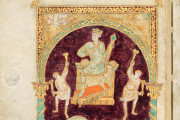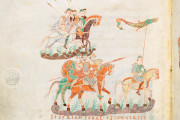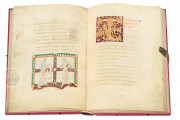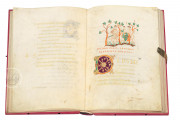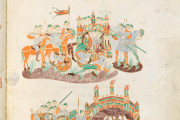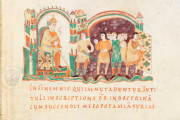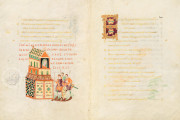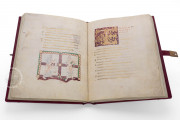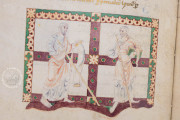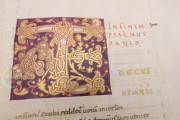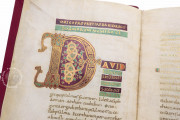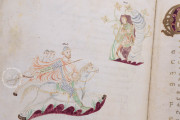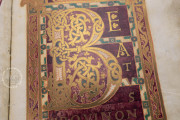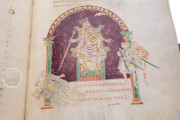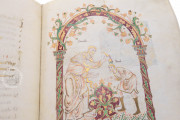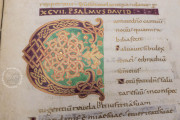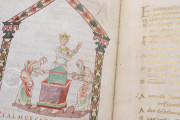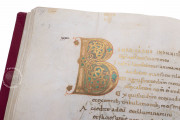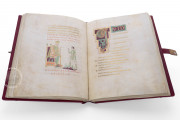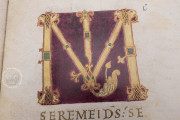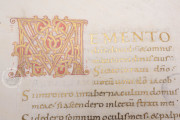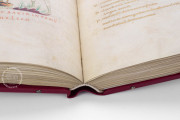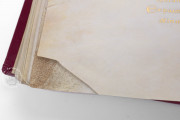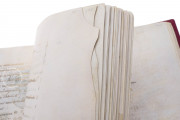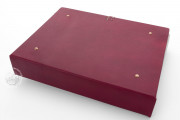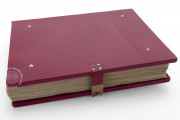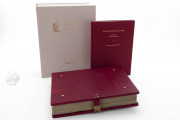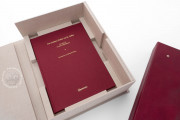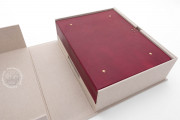The Golden Psalter of Saint Gall is a large book of the Psalms, which provides many of the texts of the prayer services celebrated daily by Christian monks. Begun in the 880s by two artist/scribes trained in the tradition of West Frankish illumination, it was completed in the 880s and 890s by monks of the Benedictine abbey of St. Gall following local—East Frankish—conventions. The text is written in gold, and the manuscript boasts fifteen miniatures: a full-page portrait of the Israelite king David as the author of the psalms, a full-page portrait of Saint Jerome, and narrative scenes from the life of David.
The grand manuscript may have been intended for the use of the Carolingian emperor Charles III "the fat." Its genesis is complicated; a change in plan led to the substitution of pages to introduce new illumination, including the splendid incipit page for the psalms (p. 15).
A Blending of Artistic Traditions
The artist/scribes from West Frankia may have been brought to St. Gall for the express purpose of creating the Golden Psalter. Their work was continued in two campaigns by several St. Gall artists and scribes. The West Frankish artists painted the portraits of David with four dancing companions (p. 2) and Saint Jerome (p. 14): both depict the protagonists against deep purple grounds in elaborate painted architectural settings.
Unusual Biblical Narratives
The Golden Psalter is justly famous for its scenes from biblical history, including two scenes depicting the building of the Tabernacle (pp. 63-64) and a series of scenes that record the Israelite army's invasion of Syria (pp. 139-141). The psalms' titles, which allude to historical events and people, inspired the narrative scenes. These lively miniatures, the work of West Frankish painters, are unframed with unpainted parchment grounds. They abound with quotidian details reflecting Frankish—rather than ancient Israelite—realities.
For the Eyes of an Emperor?
Although there is no firm evidence, it is possible that the book was intended for the use of Emperor Charles III and that his death in 888 caused one of the pauses in the manuscript's production. The book's large page size, the use of precious metals, and the extensive illumination all point to this as an exceptional book.
Gold Writing
Some of the original writing of the manuscript was executed in an alloy of copper, which degraded quickly, so quickly that some of the text was retraced in pure gold ink. The main text is written in Caroline Minuscule in long lines (a single column), with the first majuscule of each psalm verse set into the left margin. Titles and other headings are written in Rustic Capitals, as are the first lines of each psalm—the titles usually in red. The pages have generous margins, with no cost spared on materials.
Unfinished or a Fragment?
The manuscript ends with Psalm 150, which has led to speculation as to whether it was left unfinished or perhaps survives incomplete. Medieval psalters usually include the apocryphal Psalm 151, Old and New Testament canticles, and the Athanesian Creed, texts that were never copied or do not survive. The manuscript has remained in the monastic library of St. Gall since its creation.
We have 1 facsimile edition of the manuscript "Golden Psalter of Saint Gall": Goldene Psalter von St. Gallen facsimile edition, published by Quaternio Verlag Luzern, 2024
Request Info / Price


